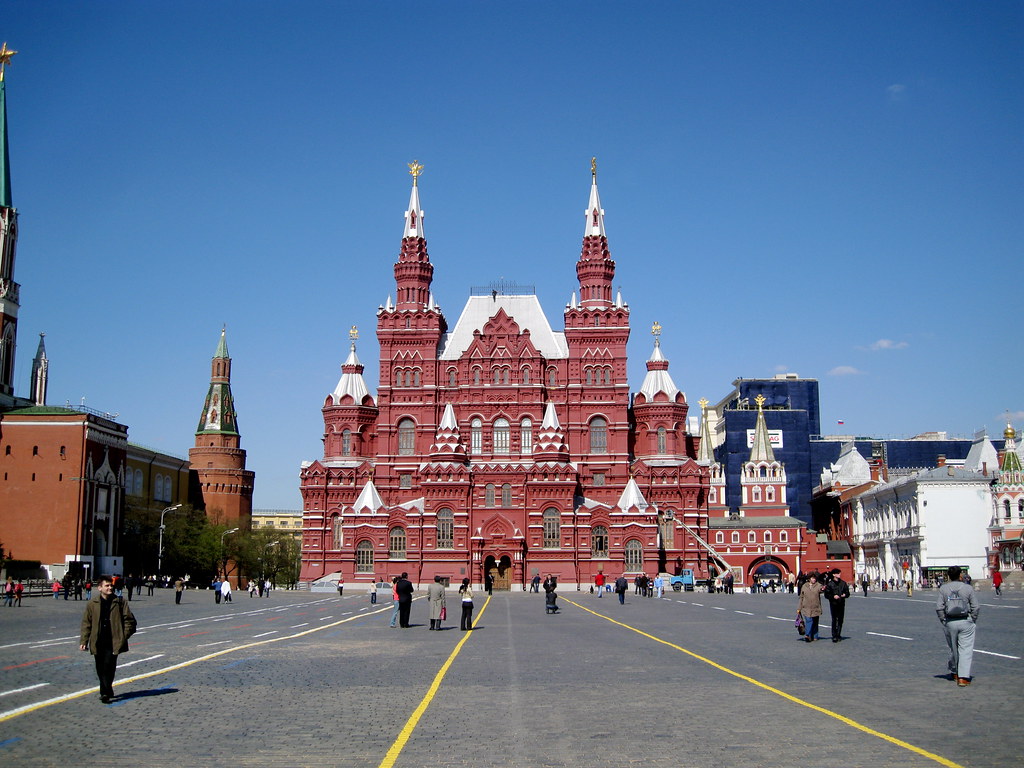Have you ever wondered what it was like to wander the streets of Moscow before the world turned upside down? Or to cruise the mighty Volga River, soaking in the vastness of Russia’s landscapes? For those who visited Russia as tourists before the war, the memories are a vivid tapestry of cultural grandeur, natural wonders, and a hospitality that transcended language barriers.
Before the tumultuous events of 2022, Russia was a burgeoning tourist destination. The country’s rich history, from the late Soviet times to the pre-pandemic era, saw a steady rise in both domestic and international tourism. With 23 UNESCO World Heritage Sites (not counting Crimea) and a spot on the list of the world’s most popular tourist destinations, Russia’s allure was undeniable. The Golden Ring’s ancient cities, the iconic Trans-Siberian Railway, and the diverse regional cultures offering everything from Maslenitsa to Siberian shamanist rituals attracted a staggering 33 million tourists in 2013 alone.
Capitals of Culture: Moscow and Saint Petersburg
Moscow and Saint Petersburg, the current and former capitals, were the crown jewels of Russian tourism. The Hermitage, Tretyakov Gallery, Bolshoi Theatre, and the Mariinsky Theatre were just a few of the cultural institutions that made these cities a haven for art and history enthusiasts. The architectural marvels of Saint Basil’s Cathedral, the Kremlin, and the Peter and Paul Fortress stood as testaments to Russia’s imperial past.
Moscow, with its vibrant energy, mixed Soviet grandeur with modern dynamism. Red Square, with its cobblestones and iconic buildings, was often the first stop for many. Nearby, the Kremlin’s golden domes and formidable walls housed treasures of the Russian state. The metro stations, often called “palaces for the people,” dazzled visitors with their ornate designs.
Saint Petersburg, Russia’s cultural heart, offered a different kind of charm. The Winter Palace, with its vast art collections, and the canals that earned it the nickname “Venice of the North,” made it a picturesque destination. The White Nights in summer, when the sun barely sets, were a magical time to visit, with the city bathed in perpetual twilight.
Beyond the Capitals: Diverse Regional Gems
Beyond the capitals, places like Nizhny Novgorod, with its historical Upper City and the bustling Lower City, offered a glimpse into the heart of the Volga region. Kazan presented a unique blend of Christian Russian and Muslim Tatar cultures, its skyline dominated by the stunning Qolşärif Mosque and the Kazan Kremlin. Yekaterinburg, on the edge of the Ural Mountains, bridged Europe and Asia with its rich history and vibrant arts scene.
The Sakha Republic’s proposal to transform former forced labor camps into tourist attractions highlighted a darker chapter of Russian history but also offered a unique educational experience. Siberia, with its vast and often harsh landscapes, attracted adventurers looking to explore its uncharted territories. The Trans-Siberian Railway, stretching from Moscow to Vladivostok, offered a journey through time and space, connecting cities and cultures across the breadth of Russia.
Natural Wonders and Outdoor Adventures
Nature tourism was another facet of Russia’s appeal. With over 100 nature reserves and 50 national parks, including the stunning Lake Baikal and the Valley of Geysers, Russia was a paradise for outdoor enthusiasts. The Seven Wonders of Russia, such as the Manpupuner rock formations and Mount Elbrus, were natural spectacles that left visitors in awe. The Kamchatka Peninsula, with its volcanoes and geysers, was a haven for those seeking raw, untamed beauty.

Health tourism thrived in mineral spa resorts across regions like Kamchatka and the North Caucasus. The Black Sea coast, with its subtropical climate, was home to popular seaside resorts like Sochi. Winter sports enthusiasts found their haven in the cold, mountainous regions of Russia, with ski resorts like Sochi’s Krasnaya Polyana and Dombay in the Northern Caucasus.
Medical tourism also saw a rise, with the weak ruble post-2014 making Russia an attractive destination for medical procedures ranging from stomatology to cardiology. Most clients hailed from the CIS states, Eastern Europe, and Asia, drawn by the affordability and accessibility of high-tech medical assistance.
A Tapestry of Cultures and Traditions
Religious tourism, though less significant in numbers, was an integral part of the Russian travel experience. Orthodox Christianity’s influence was evident in the country’s religious monuments and artifacts, from the Cathedral of Christ the Saviour in Moscow to the Valaam Monastery. Islamic and Buddhist architectural art added to the religious tapestry of Russia. The Golden Ring, a circuit of ancient cities northeast of Moscow, was a pilgrimage for those interested in Russia’s medieval past and its religious history.
Museums across Russia, from the Tretyakov Gallery in Moscow to the Hermitage in Saint Petersburg, housed some of the world’s most significant art collections. Literary and music heritage sites, such as Yasnaya Polyana, the estate of Leo Tolstoy, and the Tchaikovsky State House-Museum, allowed visitors to step into the lives of Russia’s greatest artists.
In 2013, international tourism generated a substantial US$11.2 billion in revenue for Russia. The industry supported nearly a million jobs and contributed significantly to the GDP. Visitor statistics from previous years painted a picture of a vibrant, interconnected world, with millions crossing borders to experience the wonders of Russia.
We nostalgically remember the Russia that used to exist, holding on to the hope that one day, the world may freely explore the extensive and diverse landscapes of this mysterious land.Until then, we cherish the memories and stories of those who walked the streets of Moscow, marveled at the grandeur of Saint Petersburg, and journeyed across the timeless expanse of the Russian wilderness.
Related posts:
Tourism in Russia
Explainer: How Ukrainian War Impacts on Russia’s Tourism Industry





